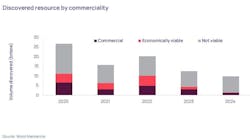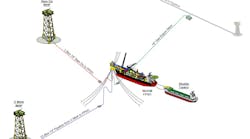Offshore staff
LONDON – Independent Oil & Gas (IOG) has issued a report on its latest measure to re-commission the Thames pipeline in the UK southern North Sea, to serve as an export route for gas from the company’s offshore hub developments.
On Sept. 6, the company ran an internal crawler-based measurement device from the Bacton terminal to a point 800 m (2,624 ft) offshore to assess the line’s internal and external condition. This section was at a higher risk of degradation since decommissioning of the pipeline in 2015.
However, analysis of the resulting data revealed neither internal corrosion nor external defects, confirming the sound condition of that part of the line, with no need for refurbishment work.
IOG was then able to determine the safe maximum test pressure (as required under the Pipeline Code) for a 24-hr hydro-test to be 150 bar (2,175 psi). The hydro-test was successfully completed on Sept. 21-23: the maximum operating pressure required under IOG’s field development plan is only around 80 bar (1,160 psi).
The 150-bar test level translates to a maximum allowable operating pressure of 100 bar, sufficient to accommodate around 550 MMcf/d of gas, comfortably taking in all planned production from IOG’s 632-bcf portfolio and leaving extensive tariff-free ullage for any further fields acquired in the future, or tariff-paying third-party gas.
The company expects to proceed to obtain approval for its development plan later in the current quarter and has been finalizing funding plans accordingly. It has revised the project schedule to take into account optimal timing for fabrication and installation of infrastructure, including unmanned platforms, connecting pipelines and associated subsea equipment.
Phase 1 offshore installation is now set to start immediately after the 2019-20 winter season, with first gas expected around mid-2020.
10/01/2018


